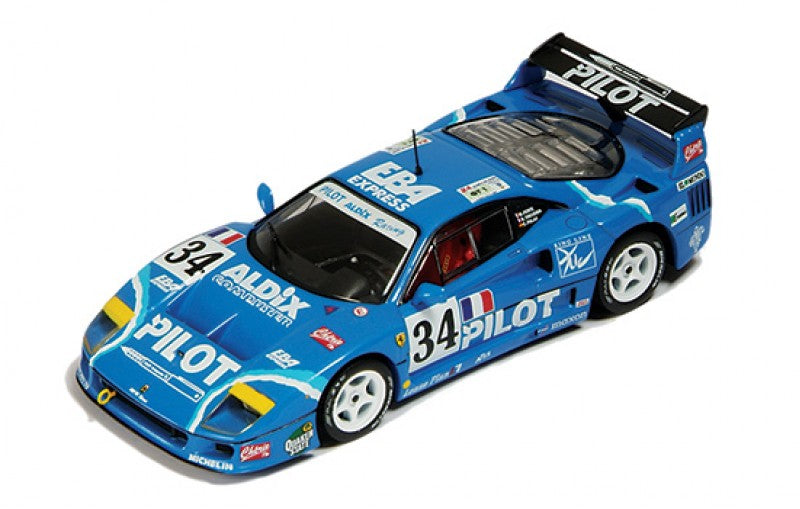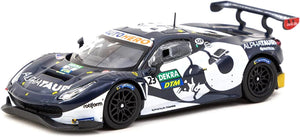The Ferrari F40 LM, a legend in its own right, was a highly modified and track-focused version of the iconic Ferrari F40 supercar. Built to tackle the demanding GT1 class of sports car racing, the F40 LM was a masterpiece of engineering, featuring a potent blend of performance, aerodynamics, and Italian craftsmanship. In 1995, this legendary racing machine made its mark on the hallowed grounds of the Circuit de la Sarthe in Le Mans, France, at the 24 Hours of Le Mans endurance race.
Carrying the number 34 and adorned with the prancing horse emblem, the Ferrari F40 LM #34 was more than just a car; it was a symbol of speed, precision, and racing pedigree. Behind the wheel of this thoroughbred were three skilled and passionate drivers, each bringing their unique talents and experiences to the race.
Leading the charge was Marc Ferté, a French racing driver with a wealth of experience in various motorsport disciplines. Ferté's journey to Le Mans was a culmination of years spent honing his skills in endurance racing and showcasing his mettle on the track. He was no stranger to the challenges of Le Mans, having previously graced its storied tarmac.
Joining Ferté was Olivier Thévenin, another talented Frenchman known for his prowess in sports car racing. Thévenin had carved a niche for himself in GT racing, and his participation in the 24 Hours of Le Mans was a testament to his dedication to the sport and his desire to compete on one of the world's grandest stages.
Completing the trio was Carlos Palau, a Spanish racing driver known for his versatility and adaptability across various racing categories. With experience in sports car racing, Palau brought his passion for speed and his determination to excel in the demanding world of endurance racing to the team.
The 1995 24 Hours of Le Mans was the stage for their endeavors, a grueling test of man and machine that spanned an entire day and night. Taking place on June 17-18, the event attracted the best of the best from the world of motorsport, with teams and drivers representing a multitude of nations and racing backgrounds.
As the F40 LM #34 roared onto the circuit, it was clear that the car's distinctive appearance, marked by a prominent rear wing and wide fender flares, was designed for one purpose: to conquer the challenges of Le Mans. The modifications, weight reductions, and aerodynamic enhancements were all part of the intricate recipe that made this machine a force to be reckoned with.
Throughout the race, the trio of drivers showcased their skills and determination, navigating the Nürburgring circuit with precision and finesse. The 1995 24 Hours of Le Mans was a relentless battle of strategy, reliability, and endurance. It was a test of man and machine, where the margin for error was slim, and every lap brought new challenges.
As the hours ticked away, the F40 LM #34 pushed the limits, demonstrating the true spirit of endurance racing. The collective efforts of the drivers and the dedicated pit crew were evident, and the car's distinctive engine note echoed through the French countryside.
The race had its highs and lows, as is typical in endurance racing, but the determination of the team remained unwavering. The checkered flag drew nearer, and the anticipation grew. And when that flag finally waved, it marked the conclusion of a remarkable journey.
While the specific race outcome may not have placed the F40 LM #34 at the very top, it was a testament to the team's dedication, the car's performance, and the enduring allure of the 24 Hours of Le Mans. The 1995 race was another chapter in the rich history of motorsport, one that celebrated the fusion of power, precision, and passion that defines racing at its highest level. And for those who witnessed the Ferrari F40 LM #34 in action, it was a memory etched in the annals of motorsport history, a reminder of the indomitable spirit of racing.
Visit us online to shop @ www.bigboytoysus.com







